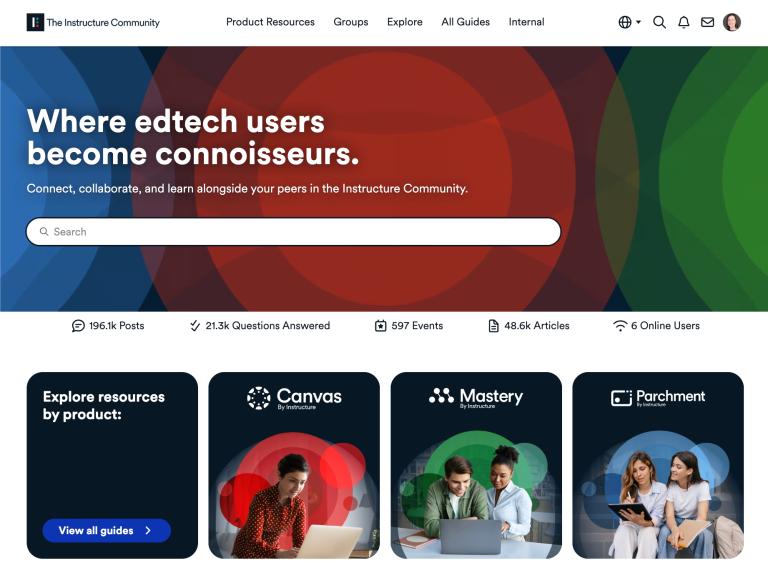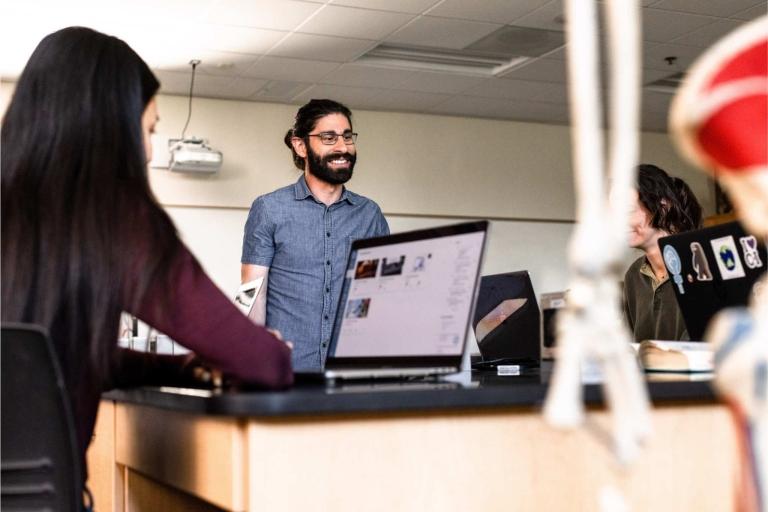Higher education institutions continue to transition to a consumer-based approach, putting learners’ needs at the forefront of instructional strategy. Students procure autonomy and choice regarding their learning, taking ownership of their academic success. Providing options empowers learners as they set goals, build skills, and attain notable achievements in their academic journeys.
Adding flexibility to the learning environment benefits and encourages learners from all different backgrounds. As technology enhances all forms of instruction, students can choose the learning modality that best fits them.

What is Hyflex?
Hyflex refers to a hybrid learning approach or model in education that combines elements of online and in-person learning. It originates from the phrase "Hybrid Flexible." Navigating today’s state of higher education requires flexibility and fluidity. Hyflex teaching is an ideology and instructional strategy to provide students with multimodal learning options, giving learners a choice in what is optimal for their success. The approach combines hybrid learning with flexibility, facilitating an accommodated learning experience. Students can stick to a preferred learning model or alternate between three modalities. The three hyflex teaching modalities:
Face-to-face: Students attend class lectures in person
Synchronous Online Learning: Students watch the live stream of lecture during instruction
Asynchronous Online Learning: Student watches the recording of the lecture at their convenience
Principles of Hyflex Teaching
Effective implementation of Hyflex teaching guides instruction through its four fundamental principles. Utilize the four principles to build and design successful hyflex learning opportunities.
Learner Choice supports the student’s option to choose between learning modalities. Each student has unique priorities and responsibilities affecting their approach to learning.
Equivalency ensures that learning quality and content are equal between each mode. Students will receive the same learning opportunities and instructional value.
Reusability provides learning resources that are usable and accessible anytime to all students. An LMS makes it easier to share instructional materials across multiple modalities.
Accessibility equips all students with course materials that can be used regardless of a student’s ability, sight, hearing, or way of processing information.
Instructional Approaches Supporting Hyflex
Hyflex teaching combined with key instructional practices strengthens educational material and promotes learner engagement, funneling student achievement. Explore the latest instructional approaches amplifying flexibility and student autonomy.
Student-Centric Learning: This approach focuses on the student's needs and learning outcomes. Learners are provided quality educational experiences, offering them a promising return on their academic investment.
Personalized Learning: Differentiated instruction common in K-12 also benefits higher education learners. This personalized approach provides students with a fair and equitable learning experience according to their level of understanding.
Gamified Learning: Implementing game elements into instruction engages and simplifies student learning. Micro-credentialing uses gamified features, rewarding learners with badges as they meet academic milestones.
Competency-Based Education: With CBE, students can demonstrate and master competency at their own pace. Learners have the flexibility to determine their personal learning pathway.
Modern higher-ed instructional approaches center on the students’ needs, facilitating academic success and career preparedness.
Preparing Students for an Agile Workforce
“Work and career readiness represent the leading factor defining student success according to 82% of student, faculty, and administrative respondents in the 2022 State of Success & Engagement in Higher Education.”
The growing demand for industry-specific skills and the shifting workforce are significant catalysts for this change. Institutions prioritize student-directed learning, emphasizing skill-based instruction to decrease barriers to competency development and increase career readiness. With Hyflex teaching, students can prepare for the tech-enhanced workforce and efficiently manage the shifting, fast-paced job markets.
"By partnering with universities and using a common, shared language, companies are able to create a dedicated funnel of new employees with skills that directly map to those they need, reducing onboarding time and the need for supplementary on-the-job training. Additionally, in our quickly evolving tech economy, these same partnerships enable upskilling and reskilling of employees throughout their careers," - Ryan Lufkin, Vice President of Global Strategy at Instructure - Building Transferable Skills for the Workplace of Tomorrow Report Ebook
Making an Impact with Hyflex
Like any modern learning ideology, Hyflex has experienced some criticism. Since instruction is offered in a multimodal format, there is a misconception that more work is required for the instructor. It’s important to note educators are teaching one lecture and providing students with three different ways to access that one lecture. Students receive the same instruction and opportunities for success through assignments, projects, and assessments. And further accommodation is provided as needed.
A successful Hyflex course requires digital fluency, sound instructional design, communication, and a robust LMS. Communication is needed for students to understand expectations and limits. This level of transparency is important regarding an institution's protocol for high-supervised assessments and courses requiring synchronous participation, such as a lab.
Explore how a dependable and reliable LMS can reduce challenges and enhance the learning experience.
Steps to an Effective Hyflex Class Setup
Hyflex teaching represents a dynamic and flexible approach to education that seamlessly blends in-person and online learning. However, to successfully implement this teaching model, it's crucial to set up your Hyflex classroom effectively.
First and foremost, assess the technical readiness of your classroom. Ensure that you have the necessary equipment and infrastructure in place to support both in-person and online students. This includes high-quality cameras, microphones, and reliable internet connectivity. Collaborate with your institution's IT department to address any technical challenges and ensure a smooth learning experience for all students.
It is important to establish clear communication protocols. Hyflex teaching relies heavily on effective communication between you and your students. Make sure you have a plan for how you will share course materials, assignments, and announcements with both in-person and online learners. Canvas is an LMS with capabilities to centralize communication and keep everyone informed.
Additionally, create a technology-friendly environment. Familiarize yourself with the tools and software you'll be using for Hyflex teaching. Provide guidance and training to your students on how to navigate these digital resources. Ensure that your classroom is equipped with user-friendly interfaces and that students can easily access online materials and participate in discussions.
Lastly, consider the accessibility needs of all your students. HyFlex teaching should be inclusive and equitable. Ensure that course materials are accessible to students with disabilities, addressing issues related to sight, hearing, or information processing. Collaborate with your institution's disability services office to provide appropriate accommodations as needed.
Providing LMS Flexibility with Canvas

A learning management system facilitates flexibility in instruction, organizes day-to-day course functions, and strengthens communication. Canvas LMS improves the academic experience for both educators and students. Hyflex educators use their LMS to keep their students engaged and up-to-date with learning materials. Students enjoy the flexibility and usability Canvas LMS provides. Personalized, human-centered instruction is managed through customizable and innovative LMS features. Additional canvas tools enhance video features, increasing utility for online asynchronous and synchronous instruction. Despite differentiated learning preferences, hyflex students can receive a quality and impactful education, increasing accessibility and equity.
"Student success today requires the availability of technology resources, as well as engaging content and instruction from technology-proficient faculty." - 2022 State Of Student Success & Engagement in Higher Education
Digital Tools to Support Hyflex
Enrich Hyflex teaching with versatile digital tools that support equitable and flexible learning. Learn more about the future of higher education and technology.
Related Content
 inst-3step.jpg
inst-3step.jpgBlogs
 13lmsfeaturesthatbenefitstudentlearning.jpg
13lmsfeaturesthatbenefitstudentlearning.jpgBlogs
 community-homepage.jpg
community-homepage.jpgBlogs

